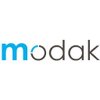Filter interviews by
InSync Analytics Financial Analyst Interview Questions and Answers
15 Interview questions
HLOOKUP is a function in Excel used to search for a value in the top row of a table and return a value in the same column from a specified row.
HLOOKUP stands for Horizontal Lookup.
It is used to search for a value in the top row of a table.
The function returns a value in the same column from a specified row.
Syntax: =HLOOKUP(lookup_value, table_array, row_index_num, [range_lookup])
Example: =HLOOKUP(123, A1:D4, 3, FA...
Income statement format includes revenue, expenses, and net income.
Start with revenue at the top
List all expenses below revenue
Calculate net income by subtracting total expenses from revenue
Include headings for each section such as 'Revenue', 'Expenses', and 'Net Income'
Format should be: Revenue - Expenses = Net Income
The negative item in the balance sheet is liabilities.
Liabilities represent the company's debts or obligations that must be paid off in the future.
Examples of liabilities include loans, accounts payable, and accrued expenses.
Having high levels of liabilities relative to assets can indicate financial risk.
WACC stands for Weighted Average Cost of Capital, a calculation used to determine a company's cost of capital.
WACC takes into account the cost of debt and equity in a company's capital structure
It is calculated by multiplying the cost of each capital component by its proportional weight and summing the results
WACC is used as a discount rate in valuation models such as discounted cash flow analysis
A company's WACC ...
What people are saying about InSync Analytics





Financial models are built by gathering historical financial data, making assumptions about future performance, and using various forecasting techniques.
Gather historical financial data from income statements, balance sheets, and cash flow statements
Make assumptions about future performance based on industry trends, company strategy, and economic conditions
Use forecasting techniques such as discounted cash flow an...
EBITDA stands for Earnings Before Interest, Taxes, Depreciation, and Amortization. It is a measure of a company's operating performance.
EBITDA is calculated by adding back interest, taxes, depreciation, and amortization to net income.
It is used to analyze and compare profitability between companies because it eliminates the effects of financing and accounting decisions.
EBITDA is often used by investors and analyst...
FCF calculation refers to Free Cash Flow calculation, which measures a company's ability to generate cash after accounting for capital expenditures.
FCF = Operating Cash Flow - Capital Expenditures
It represents the cash that a company is able to generate after spending the money required to maintain or expand its asset base.
It is a key metric used by investors and analysts to evaluate a company's financial health a...
The 3 financial statements (Income Statement, Balance Sheet, Cash Flow Statement) are interconnected and provide a comprehensive view of a company's financial performance.
Income Statement shows the company's revenues and expenses, which directly impact the Net Income.
Balance Sheet displays the company's assets, liabilities, and equity, with Net Income from the Income Statement affecting the Equity.
Cash Flow Statem...
Financial modelling is the process of creating a mathematical representation of a company's financial situation.
It involves forecasting financial performance based on historical data and assumptions.
Financial models are used for budgeting, valuation, and decision-making.
Common types of financial models include discounted cash flow (DCF), merger and acquisition (M&A), and sensitivity analysis models.
Depreciation is the allocation of the cost of a tangible asset over its useful life.
Depreciation is a non-cash expense that reduces the value of an asset over time
It reflects the wear and tear, obsolescence, or decrease in value of the asset
Common methods of calculating depreciation include straight-line, double declining balance, and units of production
Example: A company buys a machine for $10,000 with a useful l...
InSync Analytics Financial Analyst Interview Experiences
13 interviews found
I applied via Campus Placement and was interviewed in Oct 2024. There were 4 interview rounds.
Financial ratios test and MCQ test related to finance numericals
(2 Questions)
- Q1. What is balance sheet, p&l and cash flow statement?
- Ans.
Balance sheet shows a company's assets, liabilities, and equity at a specific point in time. P&L shows a company's revenues, expenses, and profits over a period. Cash flow statement shows how cash flows in and out of a company.
Balance sheet provides a snapshot of a company's financial position at a specific point in time.
P&L (Profit and Loss) statement shows a company's revenues, expenses, and profits over a specific p...
- Q2. What is the negative item in the balance sheet?
- Ans.
The negative item in the balance sheet is liabilities.
Liabilities represent the company's debts or obligations that must be paid off in the future.
Examples of liabilities include loans, accounts payable, and accrued expenses.
Having high levels of liabilities relative to assets can indicate financial risk.
(2 Questions)
- Q1. Scenario Based Questions.
- Q2. Give Income statement format.
- Ans.
Income statement format includes revenue, expenses, and net income.
Start with revenue at the top
List all expenses below revenue
Calculate net income by subtracting total expenses from revenue
Include headings for each section such as 'Revenue', 'Expenses', and 'Net Income'
Format should be: Revenue - Expenses = Net Income
(2 Questions)
- Q1. What is Vlookup?and if it's giving error then which symbol we use to remove the error?
- Ans.
Vlookup is a function in Excel used to search for a value in a table and return a corresponding value from another column.
Vlookup stands for 'Vertical Lookup'.
It is commonly used in Excel to search for a value in the leftmost column of a table and return a value in the same row from a specified column.
If Vlookup is giving an error, the symbol '#' is used to remove the error.
For example, if the formula '=VLOOKUP(A2, B2:...
- Q2. Why should we select you over other candidates
- Ans.
I bring a unique blend of analytical skills, industry knowledge, and a proactive approach to drive financial success for your organization.
Strong analytical skills: I have experience in financial modeling and forecasting, which helped my previous employer increase revenue by 15%.
Industry knowledge: I have a deep understanding of market trends and economic indicators, allowing me to provide valuable insights for strateg...
Interview Preparation Tips
Skills evaluated in this interview
I applied via Approached by Company and was interviewed in Sep 2024. There were 2 interview rounds.
Reasoning base questions
(2 Questions)
- Q1. How is financial model build
- Ans.
Financial models are built by gathering historical financial data, making assumptions about future performance, and using various forecasting techniques.
Gather historical financial data from income statements, balance sheets, and cash flow statements
Make assumptions about future performance based on industry trends, company strategy, and economic conditions
Use forecasting techniques such as discounted cash flow analysi...
- Q2. What is wacc and explain
- Ans.
WACC stands for Weighted Average Cost of Capital, a calculation used to determine a company's cost of capital.
WACC takes into account the cost of debt and equity in a company's capital structure
It is calculated by multiplying the cost of each capital component by its proportional weight and summing the results
WACC is used as a discount rate in valuation models such as discounted cash flow analysis
A company's WACC is us...
(1 Question)
- Q1. What is hlookup
- Ans.
HLOOKUP is a function in Excel used to search for a value in the top row of a table and return a value in the same column from a specified row.
HLOOKUP stands for Horizontal Lookup.
It is used to search for a value in the top row of a table.
The function returns a value in the same column from a specified row.
Syntax: =HLOOKUP(lookup_value, table_array, row_index_num, [range_lookup])
Example: =HLOOKUP(123, A1:D4, 3, FALSE) ...
Interview Preparation Tips
Experience was good it was all based on financial statement and financial ration formula based test.
I applied via Campus Placement and was interviewed in Jan 2024. There was 1 interview round.
(2 Questions)
- Q1. What is FCF calculation
- Ans.
FCF calculation refers to Free Cash Flow calculation, which measures a company's ability to generate cash after accounting for capital expenditures.
FCF = Operating Cash Flow - Capital Expenditures
It represents the cash that a company is able to generate after spending the money required to maintain or expand its asset base.
It is a key metric used by investors and analysts to evaluate a company's financial health and pe...
- Q2. What is EBITDA and explain in detail
- Ans.
EBITDA stands for Earnings Before Interest, Taxes, Depreciation, and Amortization. It is a measure of a company's operating performance.
EBITDA is calculated by adding back interest, taxes, depreciation, and amortization to net income.
It is used to analyze and compare profitability between companies because it eliminates the effects of financing and accounting decisions.
EBITDA is often used by investors and analysts to ...
I applied via Recruitment Consulltant and was interviewed in Nov 2023. There was 1 interview round.
(3 Questions)
- Q1. What is financial modelling
- Ans.
Financial modelling is the process of creating a mathematical representation of a company's financial situation.
It involves forecasting financial performance based on historical data and assumptions.
Financial models are used for budgeting, valuation, and decision-making.
Common types of financial models include discounted cash flow (DCF), merger and acquisition (M&A), and sensitivity analysis models.
- Q2. What is depreciation
- Ans.
Depreciation is the allocation of the cost of a tangible asset over its useful life.
Depreciation is a non-cash expense that reduces the value of an asset over time
It reflects the wear and tear, obsolescence, or decrease in value of the asset
Common methods of calculating depreciation include straight-line, double declining balance, and units of production
Example: A company buys a machine for $10,000 with a useful life o...
- Q3. What is Appreciation?
- Ans.
Appreciation refers to the increase in value of an asset over time.
Appreciation can be seen in various assets such as real estate, stocks, and collectibles.
It is the opposite of depreciation, which is a decrease in value.
Factors such as market demand, economic conditions, and scarcity can contribute to appreciation.
Appreciation can be realized through selling the asset at a higher price than its original purchase price...
Interview Preparation Tips
I applied via Campus Placement
Multiple choice questions
(1 Question)
- Q1. Details information of Is,Bs,Cf
- Ans.
IS, BS, and CF refer to Income Statement, Balance Sheet, and Cash Flow Statement in financial analysis.
Income Statement (IS): Shows revenues and expenses over a period, e.g., quarterly earnings report.
Balance Sheet (BS): Snapshot of assets, liabilities, and equity at a specific date, e.g., year-end financial position.
Cash Flow Statement (CF): Tracks cash inflows and outflows, e.g., cash generated from operations.
(1 Question)
- Q1. Hr explains details about organisation policies
- Ans.
The candidate should listen attentively and ask relevant questions to understand the organization's policies.
Listen attentively to the HR representative explaining the organization's policies.
Ask relevant questions to clarify any doubts or uncertainties about the policies.
Take notes to ensure accurate understanding and future reference.
Seek clarification on any specific policies that may impact the role of a financial ...
I applied via Campus Placement and was interviewed in Dec 2022. There were 4 interview rounds.

The test was about Financial aptitude where you have to calculate ratios, profit margins, EBIT etc.
(1 Question)
- Q1. This round was one on one with a Finance manager the questions were about market capitalization, stock split, the effect of stock split on market capitalization, get me through financial statements if your...
(1 Question)
- Q1. This round was with a senior management member have clear finance knowledge and formulas of Ratios, WACC, etc etc
Interview Preparation Tips
I applied via Campus Placement and was interviewed in Feb 2023. There were 3 interview rounds.

All Finance related questions are asked in MCQ & sums format
(1 Question)
- Q1. Financial statements their interlinking and other finance related question
Interview Preparation Tips
I applied via Referral and was interviewed before Sep 2022. There were 3 interview rounds.

(1 Question)
- Q1. Asking about yourseft, then questions like what is Wacc, ebitda, ebit, market cap, basic & diluted EPS, systemetic amd unsystematic risk etc
Besic talk about yourseft to know you better , salary discussion, and some financial terms also
Interview Preparation Tips
InSync Analytics Interview FAQs
Some of the top questions asked at the InSync Analytics Financial Analyst interview -
The duration of InSync Analytics Financial Analyst interview process can vary, but typically it takes about less than 2 weeks to complete.
Tell us how to improve this page.
InSync Analytics Interviews By Designations
- InSync Analytics Financial Analyst Interview Questions
- InSync Analytics Analyst Interview Questions
- InSync Analytics Financial Analyst 1 Interview Questions
- InSync Analytics Data Analyst Interview Questions
- InSync Analytics Data Processing Analyst Interview Questions
- InSync Analytics Management Trainee Interview Questions
- InSync Analytics Senior Data Analyst Interview Questions
- InSync Analytics Compliance Analyst Interview Questions
- Show more
Interview Questions for Popular Designations
Overall Interview Experience Rating
based on 12 interview experiences
Difficulty level
Duration
Interview Questions from Similar Companies
InSync Analytics Financial Analyst Reviews and Ratings
based on 79 reviews
Rating in categories
|
Financial Analyst
502
salaries
| ₹3.5 L/yr - ₹8 L/yr |
|
Data Analyst
62
salaries
| ₹1.9 L/yr - ₹4 L/yr |
|
Analyst
51
salaries
| ₹2.8 L/yr - ₹6.8 L/yr |
|
Data Processing Analyst
41
salaries
| ₹2.7 L/yr - ₹4.5 L/yr |
|
Senior Associate
40
salaries
| ₹4 L/yr - ₹7.2 L/yr |

Markelytics Solutions

Jasper Colin

Cotecna Inspection India

Value Rcm Solutions
- Home >
- Interviews >
- InSync Analytics Interview Questions

















